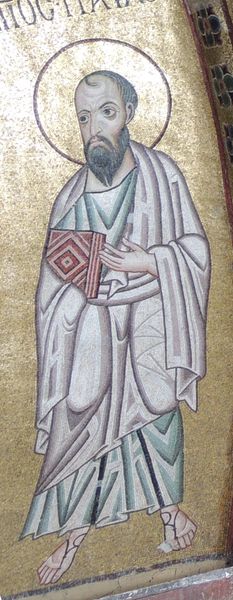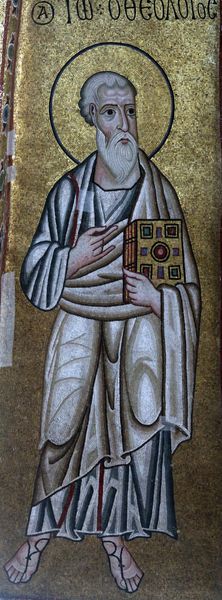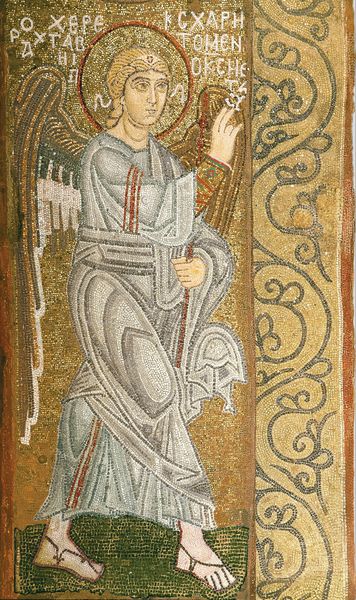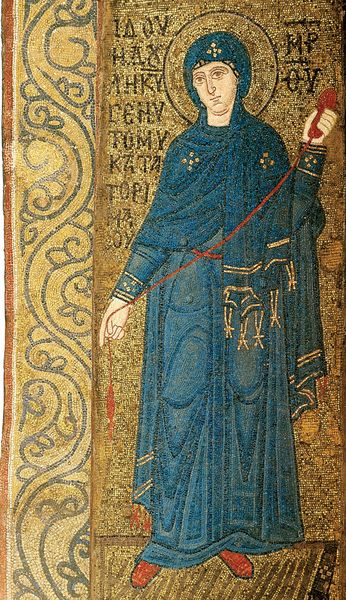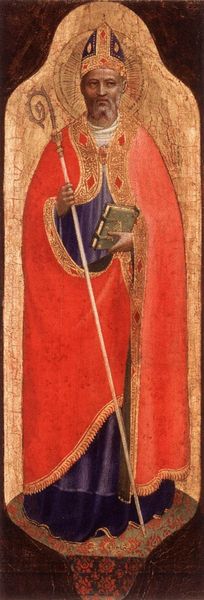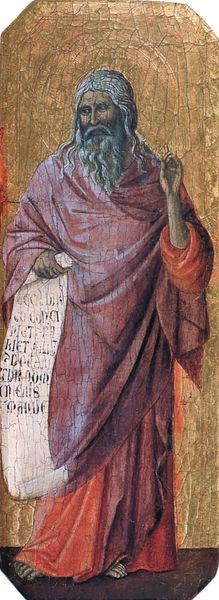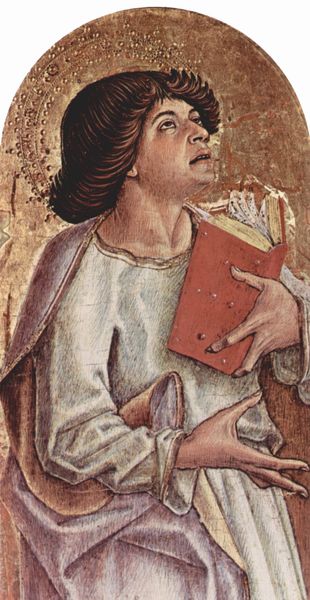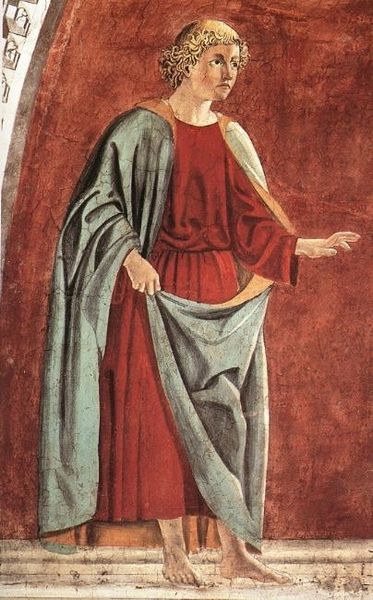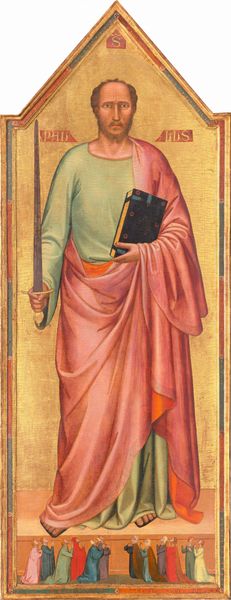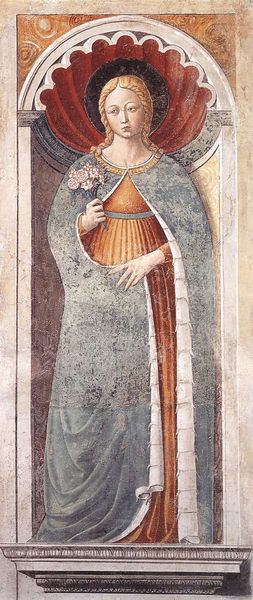
mosaic
#
portrait
#
mosaic
#
byzantine-art
#
medieval
#
prophet
#
figuration
#
tile art
Copyright: Public domain
Editor: This mosaic, depicting the Monastery of Hosios Loukas, was created around 1025 AD. The use of mosaic gives it a sense of timelessness, doesn't it? The golden background really makes the figure stand out. How do you interpret the visual elements in this piece? Curator: Indeed. If you observe carefully, the figure dominates through its verticality. The lines of the figure, formed by tesserae, are sharp. Notice, too, the intentional disproportion – the elongation of the figure that contributes to its spiritual essence, rather than mimicking realistic proportion. Editor: I see what you mean about the lines now that you point that out. Are you saying the way the artist structured the mosaic elevates the symbolic presence? Curator: Precisely. The selection and arrangement of materials—small pieces, set in a bed of mortar—is crucial. The texture results in a shimmering quality that catches and reflects light, evoking an ethereal, otherworldly atmosphere that cannot be ignored. The figure does not have just one plane of color. Editor: That’s a really interesting point. I hadn’t considered how the material contributes so much. What is he holding in his hand? How would we describe its relevance to the image itself? Curator: I propose that, without understanding Byzantine conventions, it becomes difficult to decipher how critical this religious object can be to grasping the figure in full. As an image, without text, does the cross become the only semiotic reference? What would change about your experience viewing it, then? Editor: That shifts everything. Thinking about the components and composition independently highlights its essence in an unexpected way. Thank you! Curator: The pleasure was all mine. Now it feels so new.
Comments
No comments
Be the first to comment and join the conversation on the ultimate creative platform.

